|
THOMAS HART - JOHN HANCOCK
|
The Mysterious Mezzotints of Thomas Hart |

Thomas Hart, Public domain, via Wikimedia Commons
1776 |
- The Honble. John Hancock. of Boston in New England; president of the American Congress.
- Signing the Declaration of Independence was, at that time,
considered an act of treason that very well could have ended in
the founders deaths.
- The revolution had not yet been fought or won, so they were really putting themselves on the
line by signing that document, so most of the signatures are timid or understated.
|
His large and stylish signature on the United States Declaration of Independence led to John Hancock or Hancock becoming a colloquialism for a person's signature.
(Wikipedia)
|

John Hancock Created in vector format by Scewing, Public domain, via Wikimedia Commons
United States
Declaration of
Independence
|
- John Hancock was not afraid to put himself out there, and as a result, his name has become one of the more famous on the document.
- Fascimile on velum, one of 201 produced in 1823 by William J. Stone from a copper plate engraving of the original 1776 manuscript.
- In reality, Hancock was the first to sign in a matter fitting for the president of the Congress
and only one other person was in the room when he signed it.
- Unlike how it is depicted in a famous painting that shows a gaggle of patriots witnessing the event.
- Put your John Hancock right there!
|
Hancock was important enough to change history by writing his name, so let’s stop short-shrifting him with stories about his calligraphy and get to the core of who John Hancock really was: a wealthy fortified-wine smuggler who could’ve rested on his laurels, but instead risked everything for a life of politics and radical opposition to the Brits.
(Alex Johnson)
|
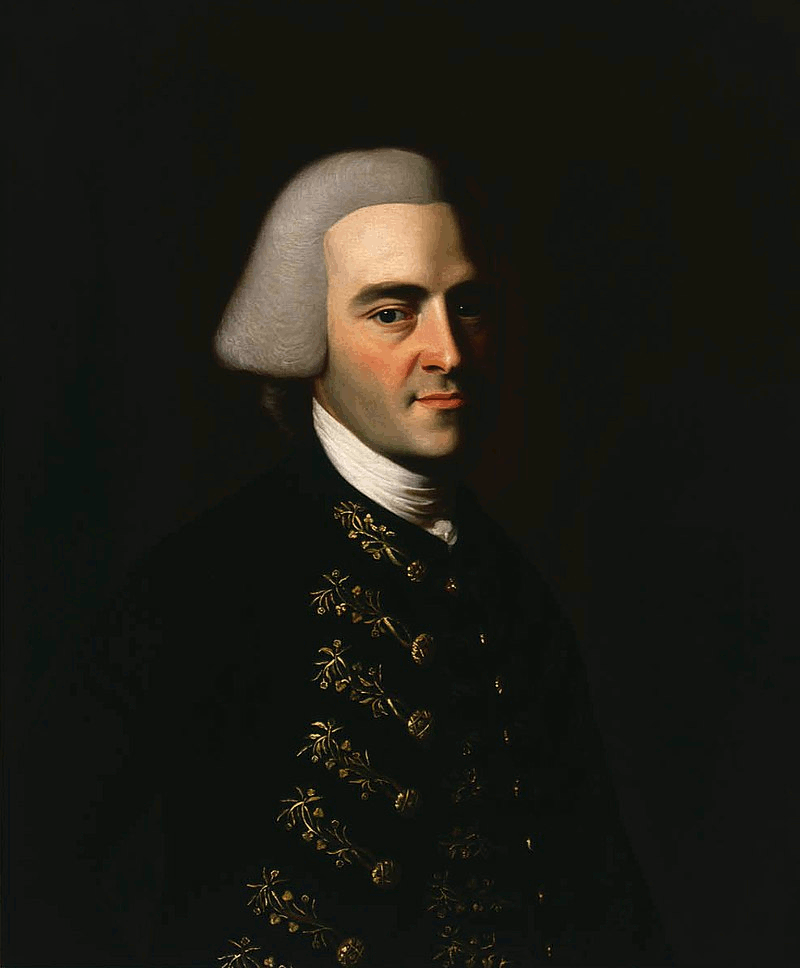
John Singleton Copley, Public domain, via Wikimedia Commons
John Hancock
1770 |
-
John Hancock (1737-1793) was born on January 12, 1737, in Braintree (Quincy),
Massachusetts.
- At that time Braintree was part of the
Province of Massachusetts Bay and was later renamed to Quincy.
- Hancock was an American Founding Father, merchant, statesman, and prominent Patriot of the American Revolution.
- He was the son of Colonel John Hancock Jr. of Braintree,
who was minister, and Mary Hawke Thaxter, who was from nearby Hingham.
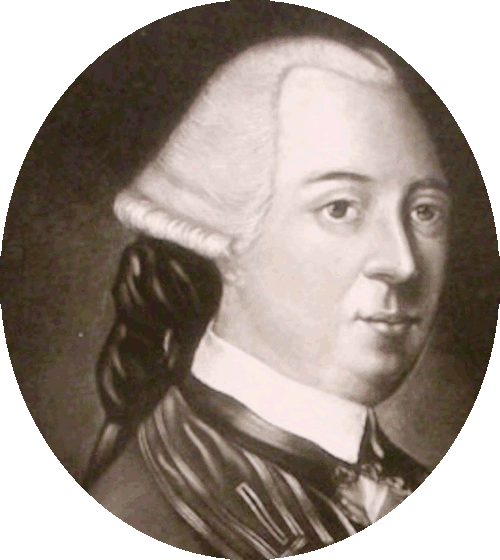
Hancock's very stylish ponytail |
-
Braintree in 1737 was a prosperous community of perhaps 40 families with large tracts of land owned by the Adams and Quincy families.
- Reverend Hancock’s church stood by the village green.
- His grandparents were
Bishop John Hancock Sr., a Congregationalist preacher, and Elizabeth
Clark.
- He was ordained in 1698 and became the head of the church in Cambridge,
England.

John Singleton Copley, Public domain, via Wikimedia Commons
Thomas Hancock
c.1764-66 |
- After his father died, his mother took John and his siblings to live with her in-laws in Lexington,
Massachusetts.
- His luck changed when he was adopted by
his uncle, Thomas Hancock (1703-1764) and his wife, Lydia Henchman.
- Thomas Hancock was a wealthy merchant
and the couple was childless.
- He was the proprietor of the House of Hancock, which exported rum, whale oil and fish, built ships, and imported books and luxury goods.

Highly successful |
- Thomas Hancock's highly successful business made him one of Boston's richest and best-known residents.
- He and Lydia, along with several servants and slaves, lived in Hancock Manor on Beacon Hill
and they spent a year converting the young John Hancock from a country bumpkin to
a cultured gentleman.
|
Thomas had come to Lexington to find an heir to his fortune. He and his wife Lydia had married in 1731 but after 13 years they were childless. Thomas made John Hancock’s mother and the bishop, an offer they could not refuse—lifelong security for John’s mother Mary, the Bishop, and all three children in exchange for the privilege of adopting young John Hancock.
(dsdi1776.com)
|
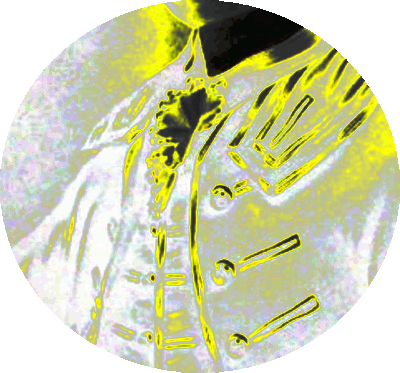
Opulent finery |
-
Thomas Hancock hired a tutor to teach John Hancock appropriate behavior, manners, and way of speaking
and dressed him in the most opulent finery.
- He made a point of introducing him to prominent military and government leaders, including the royal governor.
-
The younger Hancock graduated from the Boston Public Latin School in 1750,
after spending five years there indoctrinated by a strict Tory schoolmaster, learning to venerate the King, absorbing Latin and Greek, and studying the
Bible and the classics.
|
In 1750, at the age of 13, John Hancock passed the entrance exams at Harvard. He was the second youngest in his class, but ranked fifth out of 20 under the College’s grading system based on his uncle’s wealth and social position, and his own family’s Harvard pedigree. This ranking gave him preferential seating in church and in the classroom.
(dsdi1776.com)
|
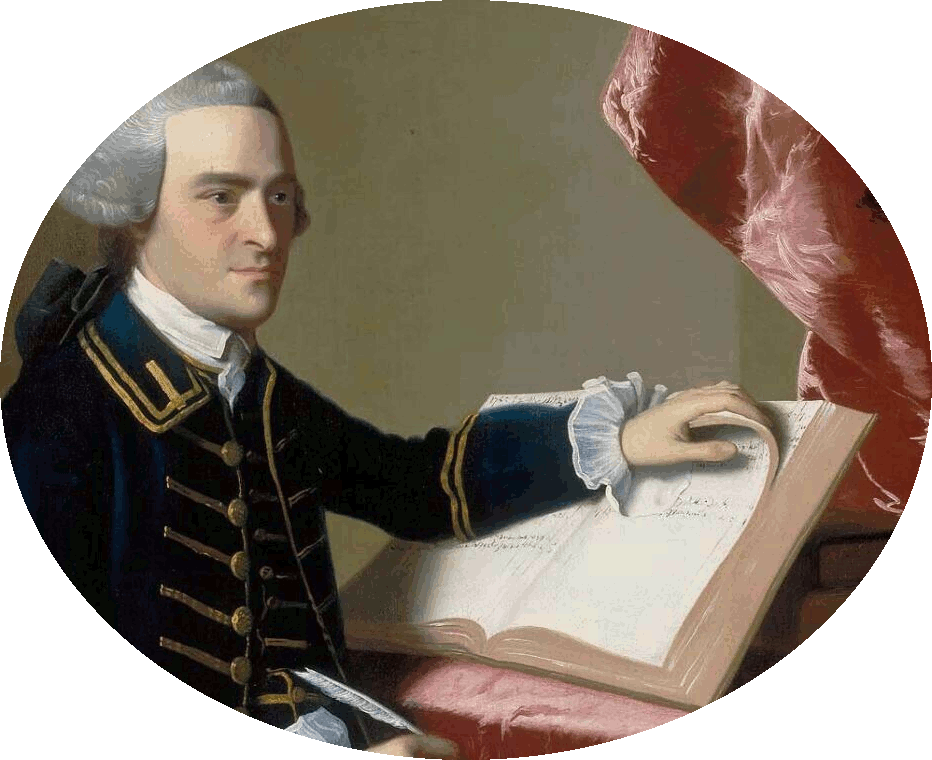
Harvard College |
- Hancock enrolled in Harvard College for a business education
and received a bachelor's degree in 1754 at age 17.
- He
apprenticed to his uncle as a clerk and proved so honest,
reliable and
capable that, in 1760, he was sent on a business mission to
England just as the French and Indian War began in America.
- From 1760 to 1761, Hancock lived in England while building relationships with
House of Hancock's customers and suppliers.
|
After John’s departure, Thomas wrote him a letter, advising him to “be frugal of Expenses, do Honor to your Country & furnish Your Mind with all wise Improvements…. God Bless you & believe me, Your Loving Uncle.”
(dsdi1776.com)
|

Graduate of
Freemasonry |
- While in England he witnessed the coronation of George III and engaged some of the leading businessmen of London.
- Meanwhile, when hostilities with the French broke out in the Seven Years War, the House of Hancock became the foremost financier and procurement source for military supplies and equipment for the British military in North America.
|
Thomas Hancock had close relations with the royal governors of Massachusetts and secured profitable government contracts during the war.
(Wikipedia)
|

Dapper |
- Hancock worked hard, but he also enjoyed playing the role of a wealthy aristocrat and developed a fondness for expensive clothes.
- Despite fashion often being derided as insignificant or
simply a feminine whimsy, Hancock knew that clothes can make
the man.
- Hancock spent a lot of money in London on the trendiest styles and justified the expense to his uncle, who was paying the bill, writing that he did it to
'appear in character.'
- Suitable clothing gave the inexperienced
23-year-old a more confident air.
|
If he dressed like a successful merchant, then he would feel like one, and others would think he was one too. He frequently used clothing and accessories—including a powdered wig, gilded jackets, and rich fabrics—to communicate how he felt about himself and project power and status. Despite wearing such obvious signs of wealth, he had a gift for connecting with all orders of people, and this made him one of the most popular men in Massachusetts.
(allthingsliberty.com)
|

Glasshouse, CC BY-SA 4.0 , via Wikimedia Commons
A cock Gules holding
a dexter hand couped
at the wrist Argent
Coat of Arms of John Hancock |
- Upon returning to Boston, he became a member of the
Masonic Lodge of St. Andrew in October 1762, which connected
him with many of Boston's most influential citizens.
- Hancock gradually took over the
House of Hancock as his uncle's health failed, becoming a full partner in January 1763.
-
His uncle died in August 1764, and Hancock, 27, inherited what was said to be the greatest body of wealth in New England.
- This placed him in a society of men who consisted mainly of
British loyalists, suspected by the working population because of their great affluence and social power.
|
When Thomas Hancock died in August 1764, John
inherited the business, Hancock Manor, two or three
household slaves, and thousands of acres of land,
becoming one of the wealthiest men in the colonies. The household slaves continued to work for John and his aunt, but were eventually freed through the terms of Thomas Hancock's will; there is no evidence that John Hancock ever bought or sold slaves.
(Wikipedia)
|
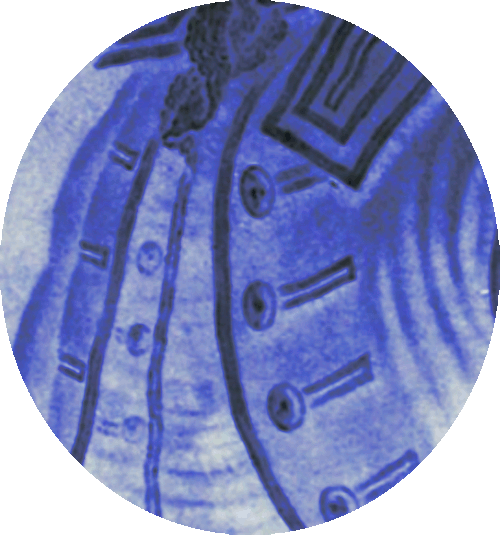
Revolutionary
politics |
- John Hancock, however, soon became very involved in revolutionary politics and his sentiments were, early on and clearly, for independence from Great Britain.
-
Before the American Revolution even began, Hancock was one of the wealthiest men in the
13 Colonies, having inherited such a profitable mercantile business from his uncle.
|
I do not stand at any price, let it be good, I like a Rich Wine.
(John Hancock to partners in London, July 23, 1765)
|
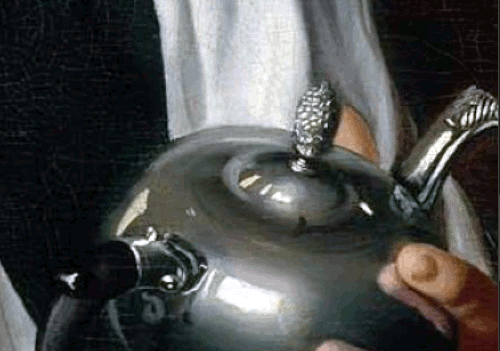
Sugar Act 1764 |
- Hancock was not only a wealthy merchant, he was also a major smuggler.
- Parliament’s import tariffs along with a culture of open bribery meant that any merchant
that had to use bribes to smuggle in foreign goods was a
target.
- As a result of new tariff laws the British
enacted, he would be forced
to pay the tariffs which would result in operating his
business at a loss.
|
After its victory in the Seven Years' War, the British Empire was deeply in debt. Looking for new sources of revenue, the British Parliament sought, for the first time, to directly tax the colonies, beginning with the Sugar Act 1764. The earlier Molasses Act 1733, a tax on shipments from the West Indies, had produced hardly any revenue because it was widely bypassed by smuggling, which was seen as a victimless crime.
(Wikipedia)
|

Merchant |
- When Parliament changed the laws to step up enforcement
known as 'civil forfeiture' in the 18th-century, Hancock had
the political connections to spread money around to make sure public opinion opposed these measures.
- In 1768, his sloop Liberty was impounded by customs officials at Boston Harbor, on a charge of running contraband goods.
- There was very little social stigma about smuggling,
especially in port cities where it was the primary generator
of wealth, it was possible to obtain insurance to protect your
business if caught.
- After Hancock's impoundment, a large group of private citizens stormed the customs post, burned the government boat, and beat the officers, causing them to seek refuge on a ship off shore.
|
Colonial merchants developed an impressive repertoire of evasive maneuvers to conceal the origin, nationality, routes, and content of their illicit cargoes. This included the frequent use of fraudulent paperwork to make the cargo appear legal and authorized. And much to the frustration of the British authorities, when seizures did happen local merchants were often able to use sympathetic provincial courts to reclaim confiscated goods and have their cases dismissed.
(Wikipedia)
|
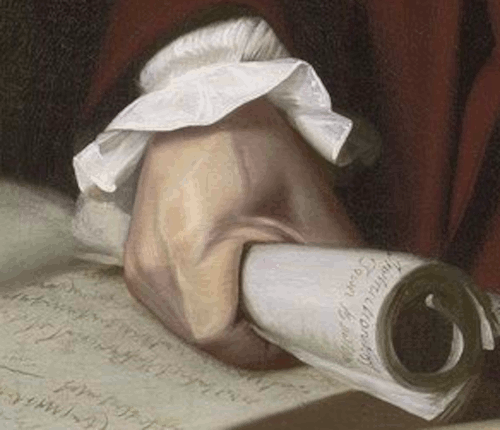
Legal system |
- The British court brought 36 seizures to trial from 1680 to the end of 1682,
however, all but 2 of these were acquitted so obviously, this had been
going on for almost 100 years.
- Alternatively, merchants
sometimes took matters into their own hands and stole illicit
goods back after they were impounded.
- The Sugar Act 1764 provoked outrage in Boston, where it was widely viewed as a violation of colonial rights.
- Civic leaders such as James Otis and Samuel Adams argued that because the colonists were not represented in Parliament, they could not be taxed by that body.
- They felt that only the colonial assemblies, where the colonists were represented, could levy taxes upon the colonies.
|
Hancock was not yet a political activist; however, he criticized the tax for economic, rather than constitutional reasons.
(Wikipedia)
|
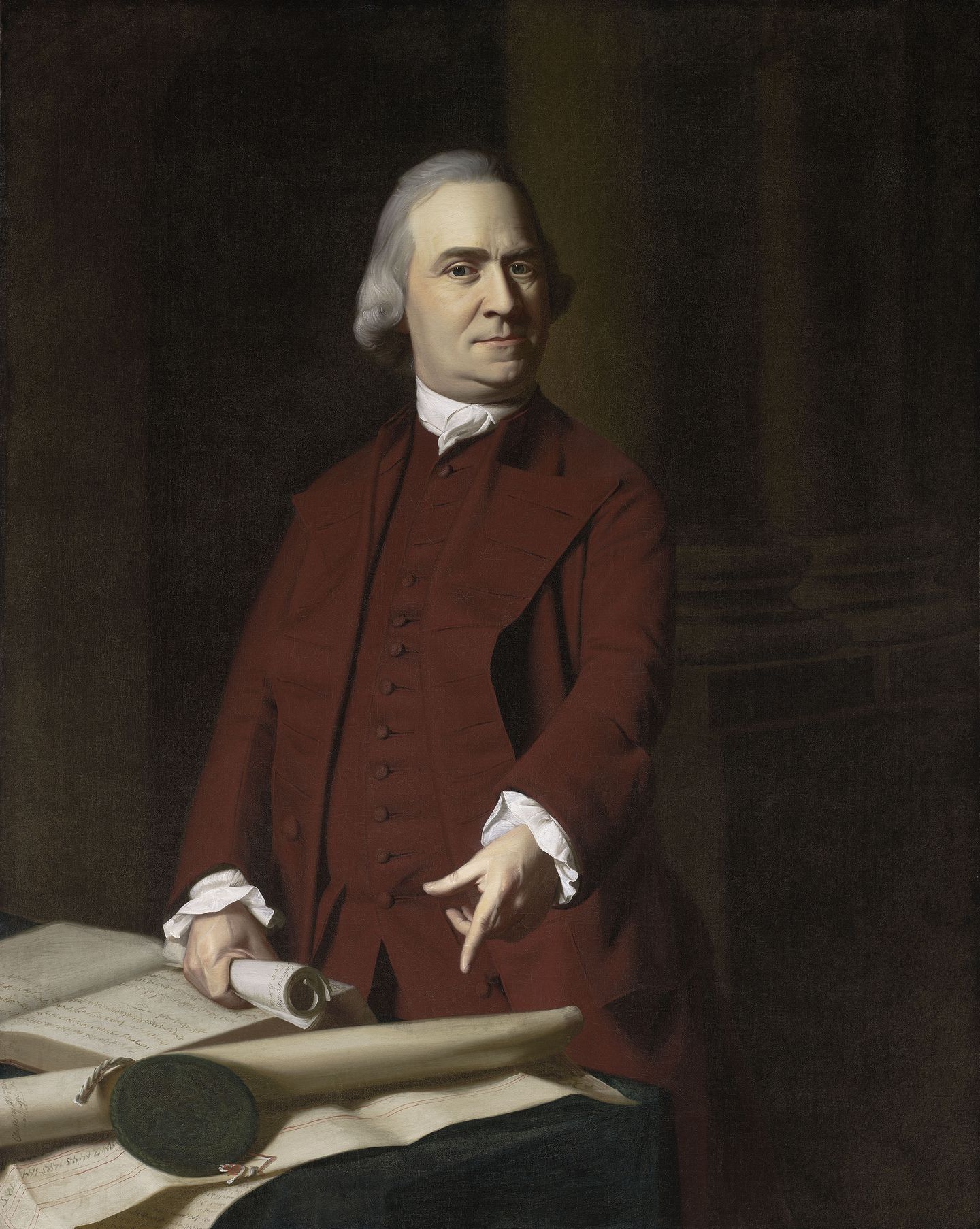
John Singleton Copley, Public domain, via Wikimedia Commons
Samuel Adams
- c. 1772
Head rabble rouser |
-
Samuel Adams
(1722-1803) was an American statesman, political philosopher,
and a Founding Father of the United States.
- He was a politician in colonial Massachusetts, a leader of the movement that became the American Revolution, a signatory of the
Declaration of Independence and other founding documents, and one of the architects of the principles of American republicanism that shaped the political culture of the United States.
- He was a 2nd cousin to his fellow Founding Father, President John Adams.
- Samuel Adams founded the Sons of Liberty.
- john
Adams was known to defend the British soldiers in court.

John Singleton Copley, Public domain, via Wikimedia Commons
John Hancock 1765 |
- Hancock was in company with the Adamses and other prominent leaders in the republican movement in New England.
-
He began his political career in Boston as a protégé of Samuel Adams, an influential local politician, though the two men later became estranged.
- Although he had a successful
mercantile shipping business, Hancock was more interested in
politics and by the mid 1760s had already won two political
offices.
- The first was a position in local Boston politics, but the second was with the colonial legislature.
- In March 1765, Hancock inherited a political seat from
an uncle on the distinquished Boston Board of Selectmen, of
which there were only 5 members.
|
Hancock emerged as a leading political figure in Boston just as tensions with Great Britain were increasing. In March 1765, he was elected as one of Boston's five selectmen, an office previously held by his uncle for many years.
(Wikipedia)
|
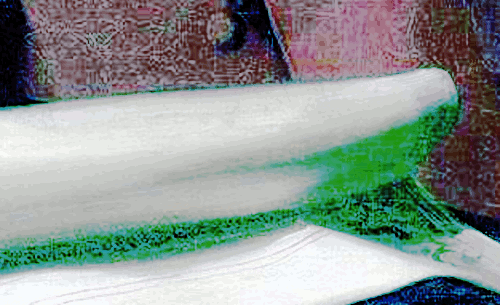
Legal documents |
- Soon after, Parliament passed the Stamp Act 1765
which was a very unpopular tax on legal documents such as
wills, as well as newspapers, cards, pamphlets and many
types of publication.
- The measure had already been enacted in Britain,
however, this
produced riots and organized resistance from the colonists.
- In 1766, Hancock was elected to the Boston Assembly,
where he was a member of the Stamp Act Congress, although he
took a moderate position as a loyal British subject.
-
Hancock thought that the colonists should submit to the act even though he believed that Parliament was misguided.
- He changed his mind a few months later and became a patriot, although he disproved
of mob violence against royal officials.
|
Hancock joined the resistance to the Stamp Act 1765 by participating in a boycott of British goods, which made him popular in Boston. After Bostonians learned of the impending repeal of the Stamp Act, Hancock was elected to the Massachusetts House of Representatives in May 1766.
(Wikipedia)
|

Extravagance and
luxury |
- Hancock benefited from the support he received from
Samuel Adams, who was the clerk of the House of
Representatives and a leader of Boston's 'popular party' known
as the 'Whigs' and later called the 'Patriots.'
- The two
were an unlikely pair; Adams was 15 years older and had a
somber, Puritan outlook, while Hancock had quite a taste for
extravagance and luxury.
- Later stories claimed that Adams
masterminded Hancock's political rise so that his wealth could
be used for the Whig agenda.
|
Historian James Truslow Adams portrays Hancock as shallow and vain, easily manipulated by Adams.
(Wikipedia)
|

Oppressive duties and customs |
- After the repeal of the Stamp Act, Parliament took a different approach to raising revenue, passing the
1767 Townshend Acts.
- This act established new
duties on various imports and strengthened the customs agency
by creating the American Customs Board which Parliament hoped
would reduce the smuggling and generate revenue for the
government.
- Smugglers violated the Navigation Acts by trading with ports outside of the British Empire and avoiding import taxes.
- Colonists, even those not involved in smuggling, found
the acts were oppressive and Hancock led a boycott of British
imports to have them repealed.

Target |
- Needless to say, the new Customs Board targeted Hancock
who was Boston's wealthiest Whig party member.
- They may
have wanted to harass him because they didn't like his
politics because he had snubbed the governor by not attending
events where customs officials were present.
- Or possibly
they knew that Hancock was a smuggler which appeared to be the
case because on April 9, 1768, two customs employees (called tidesmen) boarded Hancock's brig
Lydia in Boston Harbor.
- Hancock was summoned, and finding that the agents lacked a writ of assistance (a general search warrant), he did not allow them to go below deck.
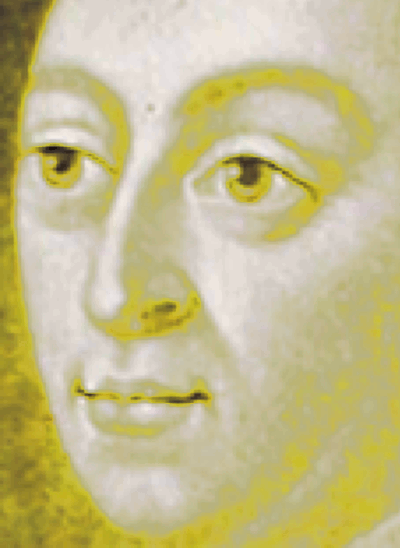
Dropped charges |
- When one of the customs officials managed to get into
the hold, Hancock's men forced him back to shore.
- The
customs officials wanted to file charges, however,
Massachusetts Attorney General Sewall dropped the charges
because he felt Hancock had done no wrong.
- Customs had a
grudge it seemed, and on May 9, 1768, they examined his ship
Liberty that had just returned with a shipment of
Madeira wine (a fortified wine from Portugal) that only filled 1/4 of the ship's carrying
capacity.
- Then they insisted he must still be smuggling,
and that he had some of the wine unloaded during the night
since 2 crew members stayed on board, although they both swore
that no unloading took place.
|
Later, some of Hancock's most ardent admirers called this incident the first act of physical resistance to British authority in the colonies and credit Hancock with initiating the American Revolution.
(Wikipedia)
|

Whig |
- One month later, one of the Liberty crewmen
changed his statement when the HMS Romney was in port
and instead, he claimed he had been forcibly held while the
ship was illegally
unloaded.
- The British government confiscated the ship on June 10, 1768, but
the citizens of Boston were already upset with the customs
officials.
- A riot ensued and the British escaped to an
island fort in the Boston Harbor called Castle William
claiming it was unsafe in town.
- The Whigs claimed that
they were exaggerating the danger in order to get London to
send more troops.
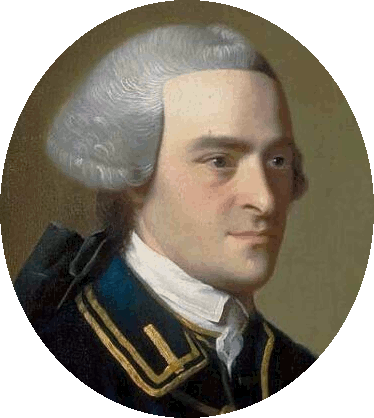
Hancock concern |
- This scuffle was followed by a series of vicious actions by the
British and they initially filed 2 lawsuits against Hancock.
- The first lawsuit in June 1768, resulted in the confiscation
of the Liberty in August, whereafter it was used by
the British to enforce trade regulations and was burned by
angry colonists in Rhode Island in 1769 who thought it was a
'government' ship.
- Hancock's
accuser also stood to gain financially because any penalties
would be awarded to the governor, the informer and the Crown,
each receiving a third.

Connections |
- The 2nd trial began in October
when he was charged for the removal of wine without paying the
duties.
- Hancock had connections and John Adams served as
his lawyer and managed to get all charges dropped.
- Hancock and Adams beat the charges, using the argument that paying wine duties was unconstitutional in the first place, as it represented a tax levied without consent.
- No one
really knew if he was guilty or not, although he was labeled
as a smuggler by many, he was not charged, and many felt it
was political revenge.

Redcoat |
- The British took action with a show of military might
that was prompted by Samuel Adams' 1768 Circular Letter
which he sent to all the colonies hoping to coordinate
resistance to the acts.
- Four regiments of the British
Army were sent to Boston and orders for the Governor of
Massachusetts to revoke Adams letter, which Hancock and the
Massachusetts House voted against.
- Instead, the House drew up
a petition demanding Governor Bernard's recall and when
Bernard returned to London in 1769, Bostonian's celebrated.

Taunting |
- In March 1770, British troops fired on a crowd that was
taunting them as tensions continued to increase in an affair
called the Boston Massacre.
- So much of the American Revolution has become mythology,
such as the massacre, which began when a soldier was harassed by a wig maker for not paying his bill.
- The argument caught the attention of passers-by who joined in and it eventually turned into an angry
mob just looking for an outlet.
- It's something that
today would be portrayed as a unlawful gathering or violent
protest.
- By today's standards it would be easily quashed by the militarized police and plastered on the evening news as a violent protest to attract viewers and advertising
revenue.
|
The crowd was mostly lower-class workers, including blacks, but the famous image of the event was a bunch of poshly-dressed elite whites with a formal firing line of British soldiers. The image was made by
Paul Revere, and was commissioned by Sam Adams purely for propaganda.
(Truth)
|
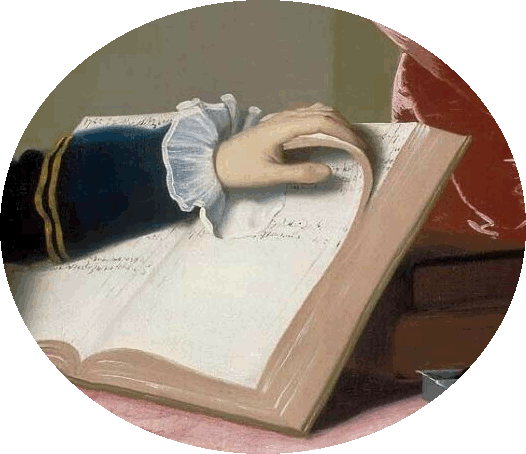
Massachusetts House |
- After meeting with the new Governor Hutchinson and the
British officer in command, Hancock warned them there were
10,000 armed colonists ready to march to Boston if the troops
did not leave.
- The British then agreed to move some of
their troops to Castle William in Boston Harbor and Hancock was celebrated as a
hero.
- His re-election to the Massachusetts House in May was nearly unanimous.
- Shortly after, he was able to resolve his differences with
Governor Hutchinson who even recommended Hancock's election to
the Council, which Hancock refused.
- However, he used the
improved relationship to persuade Hutchinson to reverse some
orders he had made.
|
Hancock spent the next few years increasing his commitment to the radical opposition scene in Boston despite receiving some favors from the Boston governor, including an appointment to his council and a militia promotion.
(Alex Johnson)
|
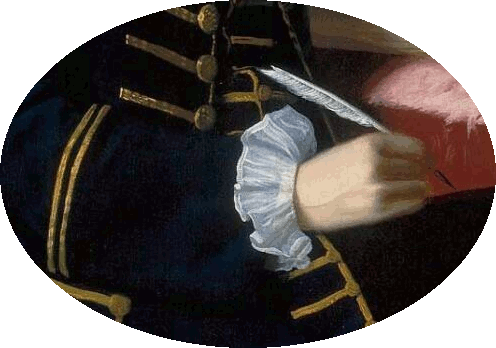
Correspondence |
- Hutchinson had hoped to win over Hancock and discredit
Adams but that didn't happen.
- By this time, Adams and
Hancock weren't getting along, and when Adams formed the
Boston Committee of Correspondence in November 1772, to advocate colonial rights, Hancock
declined to join.
- This created the impression that there
was a split in the Whig ranks.
- But whatever their differences, Hancock and Adams came together again in 1773 with the renewal of major political turmoil
when Hutchinson called for the abridgement of 'English
liberties.'
- The Massachusetts House, blaming Hutchinson for the military occupation of Boston, called for his removal as governor.
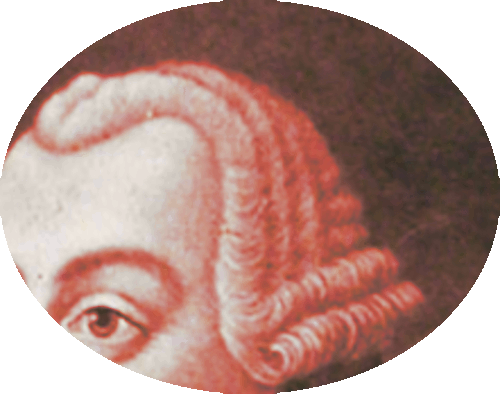
Enemy |
- Even more trouble followed Parliament's passage of the
1773 Tea Act.
- On November 5, Hancock was elected as moderator at a Boston town meeting that resolved that anyone who supported the
act was an
'Enemy to America.'
- Hancock and others tried to force the resignation of the agents who had been appointed to receive the tea shipments
but were not successful.
|
Hancock was at the fateful meeting on December 16 where he reportedly told the crowd, "Let every man do what is right in his own eyes.
(Wikipedia)
|
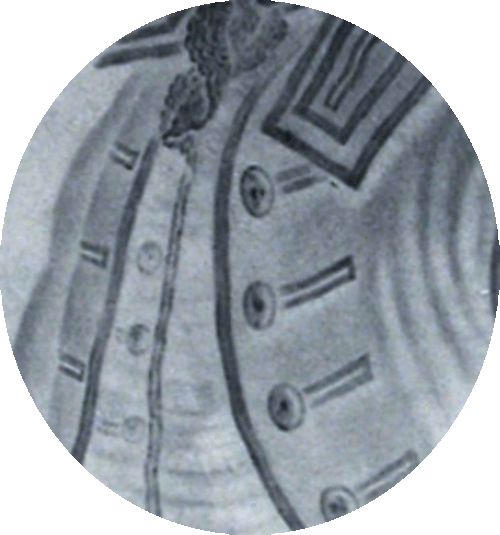
Boston Tea Party |
- Hancock abetted the Boston Tea Party in
December 1773, for which he hired Samuel Adams as a rabble rouser.
- When 3 tea ships arrived in Boston with discounted East India Company tea that would have undersold Hancock's tea, he had Adams' thugs first stop the tea from being unloaded, and then had them board the ships and toss the tea into the harbor.
-
In 1774, Hancock was elected to the Provincial Congress of Massachusetts and simultaneously to the Continental Congress.
- Over the next few months, Hancock was disabled by gout, which troubled him with increasing frequency in the coming years.
|
Since it was the London regime's overreaction to that event that led to the Revolution, it follows that if any man can be said to have started the Revolution (at least, on the American side) it was John Hancock.
(Bruce Mathews)
|
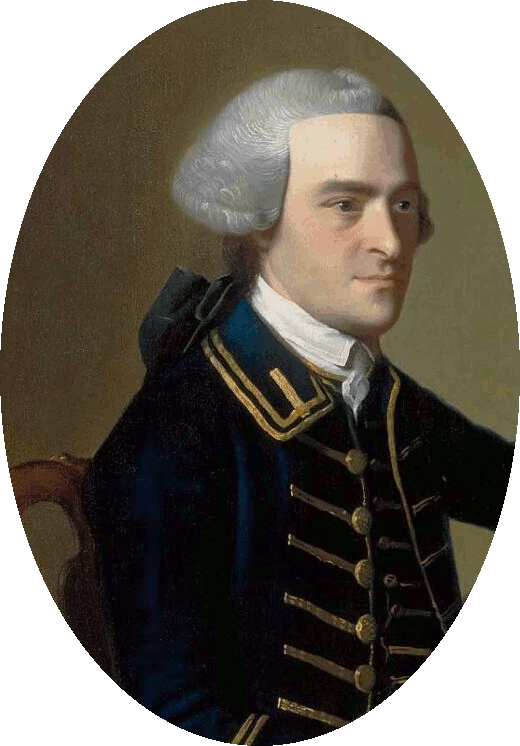
Leading Patriot |
- By March 5, 1774, he had recovered enough to deliver the
4th annual Massacre Day oration, a commemoration of the
Boston Massacre.
- Hancock's speech denounced the presence of British troops in Boston,
however, the speech was probably written by Hancock in collaboration with Adams, Joseph Warren, and others.
- It was published and widely reprinted, enhancing Hancock's stature as a leading Patriot.
|
In March of 1774, Hancock solidified his revolutionary street cred by delivering a speech for the Boston Massacre’s fourth anniversary. Among Hancock’s words that day: “The troops of George the third have crossed the Atlantic, not to engage an enemy, but to assist a band of traitors in trampling on the rights and liberties of his most loyal subjects; those rights and liberties, which, as a father, he ought ever to regard, and as a king, he is bound in honour to defend from violation, even at the risk of his own life.”
(Alex Johnson)
|

John Singleton Copley, CC0, via Wikimedia Commons
General Thomas Gage
Displaying the
Masonic hand sign of
faith |
- Parliament responded to the Tea Party with the Boston Port Act, one of the so-called
Coercive Acts intended to strengthen British control of the colonies.
- Hutchinson was replaced as governor by General Thomas Gage, who arrived in May 1774.
- Massachusetts House elected
5 delegates to send to the First Continental Congress in Philadelphia
and Hancock stayed behind.
- Gage dismissed Hancock from
his post as colonel of the Boston Cadets and he canceled a
meeting of the General Court.

Lord Dartmouth |
- Gage received orders from Lord Dartmouth
to arrest the principal actors and abettors in the Provincial Congress whose proceedings appear in every light to be acts of treason and rebellion
against the British.
- The Congress warned Gage that he was leading everyone down a path to civil war, and demanded concessions that would put more power back in the hands of local authorities, rather than representatives of the crown.
- Hancock was
then elected as president of the
new Provincial Congress who created the first minutemen
companies of militia who were to be ready for action on a
moment's notice.

Fateful mission |
- On the night of April 18, 1775, Gage sent
out a detachment of soldiers on the fateful mission that
sparked the American Revolutionary War.
- The purpose of the British expedition was to seize and destroy military supplies that the colonists had stored in Concord.
- There were rumors that Gage wanted to arrest Samuel Adams
and John Hancock, but he never attempted it because he knew
that they would simply be replaced.
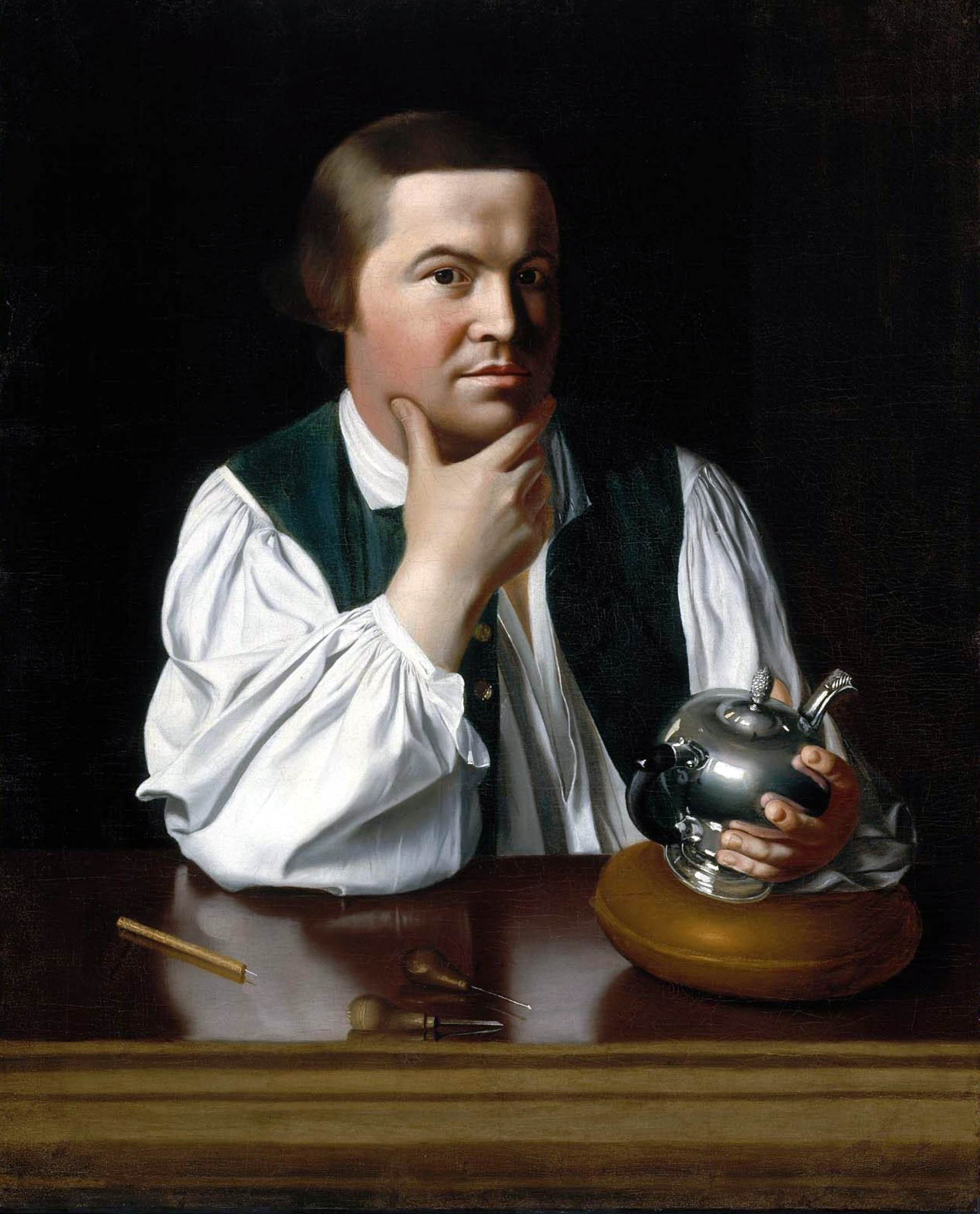
John Singleton Copley, Public domain, via Wikimedia Commons
Paul Revere in 1768
Displaying the
Masonic penalty pose |
- Although Gage had evidently decided against seizing Hancock and Adams, Patriots initially believed otherwise.
-
Britain’s attorney general and solicitor general found Hancock, Samuel Adams, and a few others chargeable with high treason.
-
Paul Revere (1735-1818) was born in the North End, Boston, on December 21, 1734, according to the Old Style calendar then in use, or January 1, 1735, in the modern calendar.
- His father Apollos Rivoire (anglicized to Paul Revere), was a French Huguenot
silversmith, a trade his son would also take up.
|
Paul Revere is an American legend. He is one of the first "super heroes" born out of our quest for independence and freedom from England. But the inherent nature of being a legendary superhero is that much of the story we love and cherish are, in actuality, myths. (teachinginroom6.com)
|
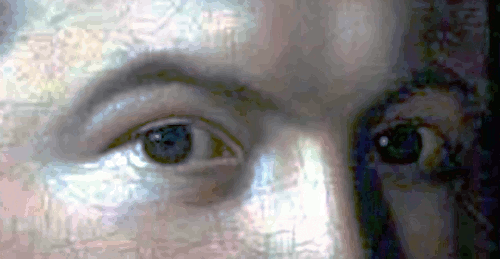
Spy |
- In early 1775, Revere joined a group of 30 spies who would walk the streets of Boston all day and all night long, looking for information about the British Regulars
(loyalists).
- Revere was hired by the Boston Board of Selectmen, of which
John Hancock was one of the 5 members, to be a messanger and
warn patriots that the British were coming.
- From Boston, Joseph Warren dispatched
the 2 midnight rider messengers, William Dawes (1745-1799) and Paul Revere to warn Hancock and Adams that British troops were on the move and might attempt to arrest them.
- They undertook this mission along with a number of messengers riding other routes.
|
In a speech made to fellow Freemasons in 1797, Paul Revere claimed that serving as Grand Master was the “greatest happiness” of his life. No one knows exactly what motivated Revere to become a Freemason, but he reaped considerable benefits from his membership, despite periods of turmoil and disappointment. (paulreverehouse.org)
|
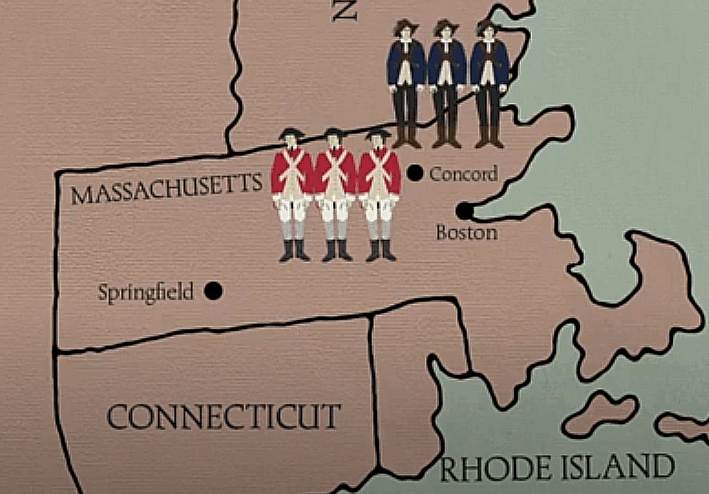
Springfield is the
capital |
- There were actually dozens of riders. Paul Revere is only famous because his last name rhymes with
'hear.'
- Revere did not run around yelling ;The British are coming!'
because it was a specific secretive mission, instead of
shouting, they were whispering the news.
- They were actually saying 'The Regulars are coming out,' referring to the Regular Infantry
because they never referred to them as British as technically speaking, they were all British.
-
Revere was also one of 2 men who was a member of almost all of the Whig parties in the Massachusetts Bay Colony.
- The other was Dr Joseph Warren. and both Warren and Revere helped organize of a large counter-intelligence and alarm network.
|
Sybil (or Sibbell) Ludington (April 5, 1761 – February 26, 1839) was an American woman who allegedly made a ride during the American Revolutionary War, though modern accounts dispute this. On April 26, 1777, at age 16, Ludington, the daughter of a Colonel Henry Ludington, was claimed to have made an all-night horseback ride 40 miles (64 km) to rally American militiamen in neighboring towns after British forces raided and burnt Danbury, Connecticut. (Wikipedia)
|
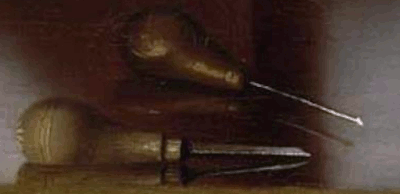
Tools |
-
Having been duly alerted, Hancock and Adams sent Revere and Dawes on to Concord to alert the town.
- They met up with a young doctor, Prescott, age 24, who joined them in their task of
waking households
along the road to Concord.
- In a circa 1798 letter, Revere elaborates slightly that Prescott was,
'a High Son of Liberty,' and so they trusted him in helping with the crucial mission.
- Revere also stated that Prescott was well known in the area
since he was a country doctor, and would be helpful in assuring residents that this was all for real.
|
Prescott also, according to legend, went on to warn the militia in the Town of Acton that “the Regulars are out,” thus assuring that the Acton Minutemen would arrive in time to lead the advance on the Old North Bridge in Concord and suffer the first casualties. Prescott’s somewhat mythical ride through Acton has been reenacted on Patriot’s Day since 1962. But the more I search for primary sources behind the story, the more I realize that we really don’t know much at all about Dr. Samuel Prescott. (Patrick
Browne)
|
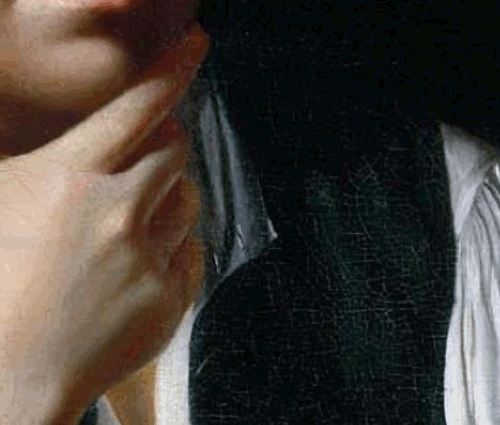
Captured by the
British |
- Paul Revere reached Lexington around midnight and gave the warning.
-
Except Revere did not complete his famous ride; he was captured by the British
about 3 miles outside Lexington, or half the way to Concord.
- Revere, Dawes, and Prescott were detained by a British
Army patrol in Lincoln at a roadblock on the way to Concord.
- Dawes escaped, though he fell off his horse not long after and did not complete the ride
and returned to Lexington.
- Revere was detained by the British, who took his horse and
he walked back to Lexington.
- Samuel Prescott was the midnight rider who didn't get caught.

Revered |
- The really amazing thing is that Dr. Samuel Prescott wasn't even supposed to be involved. he wasn't part of the plan.
- Prescott jumped his horse over a wall and escaped into the
swampy forest.
- He eventually reached Concord about 1:30am where the
town bell was rung, after alerting many residents along the way.
- Prescott, was the only one who actually made it to the destination, Concord.
- And yet, Revere is the only one that was
'revered' (idolized) by people today, which is not a coincidence
considering his name.
-
Actually, the longest ride by far, sone claim, was from a man named Israel Bissel.
|
Longfellow's family had a connection to the historical Paul Revere. His maternal grandfather, Peleg Wadsworth, was Revere's commander on the Penobscot Expedition. (Wikipedia)
|
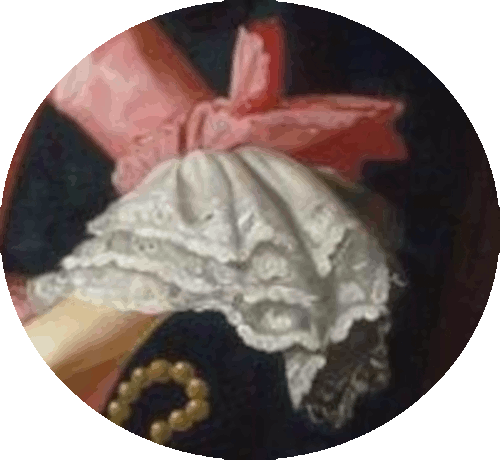
Missing love
interest |
- There was also another part of the myth that
Lemuel Shattuck (1793-1859) historian, politician, and
myth-maker inserted into the story.
- This was the tale of Prescott out on the road at
1:00am because he was on his way home after courting his
'fiancee,' Lydia Mulliken.
- Shattuck relates that Prescott,
'had spent the evening at Lexington, at the house of Mr. Mulliken, to whose daughter he was paying address.'
- Mr. Mulliken, Lydia’s father, had, in fact, been dead for 8 years,
so there’s a bit of a red flag.
- Where Shattuck got this information is not disclosed.
-
Some feel that Prescott was a secret courier for the Sons of
Liberty due to the nature of his work which could be used as a
cover in the evening hours, plus the fact that Revere
acknowledged him as one of them.
|
It is, perhaps, worth noting that Shattuck’s book was highly controversial on a number of matters and sparked a furious rivalry between the towns of Acton and Concord. (Patrick
Browne)
|

Masonic hand |
- Hancock, still considering himself a militia colonel, wanted to take the field with the Patriot militia at Lexington, but Adams and others convinced him to avoid battle, arguing that he was more valuable as a political leader than as a soldier.
- Besides, this is the way these wars always go, the citizens
do the fighting, not the instigators.
- As Hancock and Adams made their escape
to Philadelphia, the first shots of the war were fired at Lexington and Concord.
- What Americans call the American Revolution the British call the American War for Independence.
|
The biggest myth might be that Paul Revere’s ride was crucial to how the Battle of Lexington and Concord of 19 April 1775 turned out. Rural Massachusetts Patriots were already on alert, especially after they spotted British officers riding west through their towns. Other riders were spreading the same news. Hours passed between the first alarms and when the opposing forces actually engaged, giving Patriots time—more than enough time in some cases—to assemble in militia companies. (J. L. Bell)
|
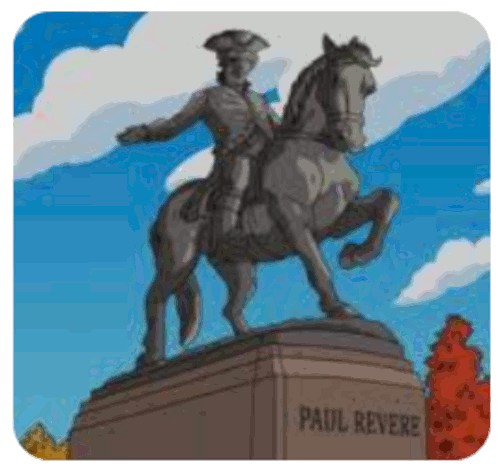
The Ghost of Paul
Revere - Simpsons |
- In a single poem, Longfellow elevated a man of limited regional fame into a Founding Father on a par with the great Massachusetts patriots of the day.
- But was it deserved?
- The poem, while inspiring, is a work of artistic license, not strict history.
- he real-life Paul Revere was not a national hero until Longfellow crafted his poem.
- It was written in 1860, almost 100 years after the
Revolution, on the eve of the civil war in an effort to drum up patriotic feelings amongst the
Union soldiers.
- Much like Freemason Milt Caniff drawing
Steve Canyon cartoons for the government propaganda
machine during WWII.
|
He said to his friend, “If the British march
By land or sea from the town to-night,
Hang a lantern aloft in the belfry arch
Of the North Church tower as a signal light, —
One, if by land, and two, if by sea;
And I on the opposite shore will be,
Ready to ride and spread the alarm
Through every Middlesex village and farm,
For the country folk to be up and to arm.”
(Henry Wadsworth Longfellow, The Midnight Ride of Paul Revere)
|

Edison Studios |
- Paul Revere has featured in countless films and TV shows over the years, including
Disney’s Johnny Tremain, and, recently, the Sons of Liberty miniseries.
- But Revere’s first appearance on the silver screen was actually in 1914, in
The Midnight Ride of Paul Revere, produced by Edison Studios and directed by Charles Brabin.
|
He said to his friend, “If the British march
By land or sea from the town to-night,
Hang a lantern aloft in the belfry arch
Of the North Church tower as a signal light, —
One, if by land, and two, if by sea;
And I on the opposite shore will be,
Ready to ride and spread the alarm
Through every Middlesex village and farm,
For the country folk to be up and to arm.”
(Henry Wadsworth Longfellow, The Midnight Ride of Paul Revere)
|
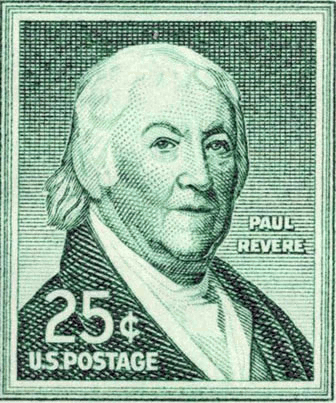
Stamp of approval |
- The movie brought Paul Revere’s story into a new medium as a patriotic myth which may have resonated with American audiences on the eve of WWI.
- The story line follows Longfellow's highly romanticized version of Paul Revere’s
ride rather than historical fact.
- This was one of Edison's earlier forays into 'educational'
films which were intended to convey both historical facts and
morality to the audience.
|
In the 1910s, the company began to embrace the strategy of producing feel-good patriotic films, adapting stories which they already knew had audiences and would sell well. Many of the films produced during this time, such as The Birth of the Star-Spangled Banner (1914) adapted already famous events from US history. The studio also began to develop a stable of actors who had already featured in commercially successful films – the very beginning of movie studios attempting to use “movie stars” to attract audiences. (Mehitabel Glenhaber)
|
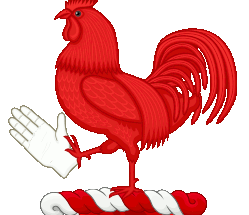
Hand cock |
- Throughout the movie, Brabin took artistic license to make Paul Revere look good on film.
- Revere rides a white horse, a terrible choice for avoiding British sentries at night, but a great one for maximizing contrast with Revere’s dark outfit and night-time
scenes on low-quality early film.
-
Brabin’s film builds on Longfellow’s imagery, for the first time transforming Paul Revere into the cinematic action hero that many people think of him as today.
|
Perhaps, because they had already been re-creating
battles for news reel studios, this was the sort of dramatic scene which Edison Studios directors and technicians knew they could pull off well. (Mehitabel Glenhaber)
|

War and violence |
- Brabin’s film also focuses substantially on war and violence, including an extended scene of the fighting in Lexington and Concord.
- In the late 1910s, Edison Studios began to market films
to schools and orphanages.
- Edison claimed publicly in the later 1910s that it would be possible to
'teach the children everything from mathematics to morality, by little dramas acted out before the camera.'
|
Though this film was produced a little before
Edison’s turn to educational films, it might represent
an early experiment in the power of film to engage
audiences in historic facts – advertisements for the
film boast that large portions of the film were filmed
on location, and that the film will “stir the minds of
young and old.” (Mehitabel Glenhaber)
|
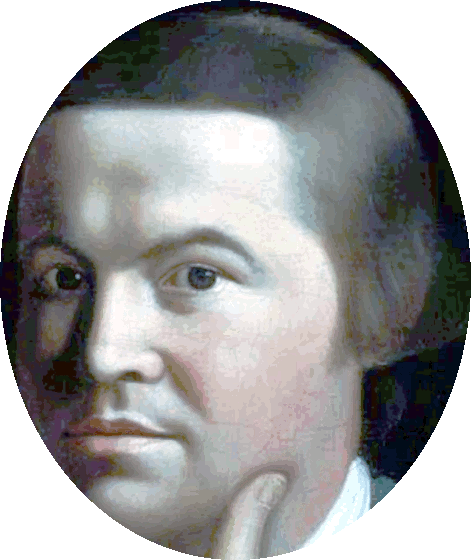
Freemason's worship
Lucifer |
- Freemasonry as a social organization in Massachusetts officially began in 1733, the year before Revere’s birth, when the Grand Lodge of England (1717) chartered St. John’s Grand Lodge in Boston.
- This fraternal society concerned itself with 'the
cultivation of the mind and the regulation of the manners.'
- Revere quickly attained full membership and began serving as
an officer in St. Andrew’s Lodge which was chartered in 1756 by the Grand Lodge of Scotland,
which represented Ancient Masonry.
- Between 1762 and 1797, there were only
4 years when Revere was not holding one or more Masonic offices.
-
Paul Revere really looks like Jack Black.
|
He finally became Master of the Lodge in December 1770. During this busy period, the Lodge reviewed and initiated candidates, purchased the Green Dragon Tavern as a meeting place in 1764, and tried, unsuccessfully, to establish a brotherly relationship with the older Masonic lodges in Boston. (paulreverehouse.org)
|
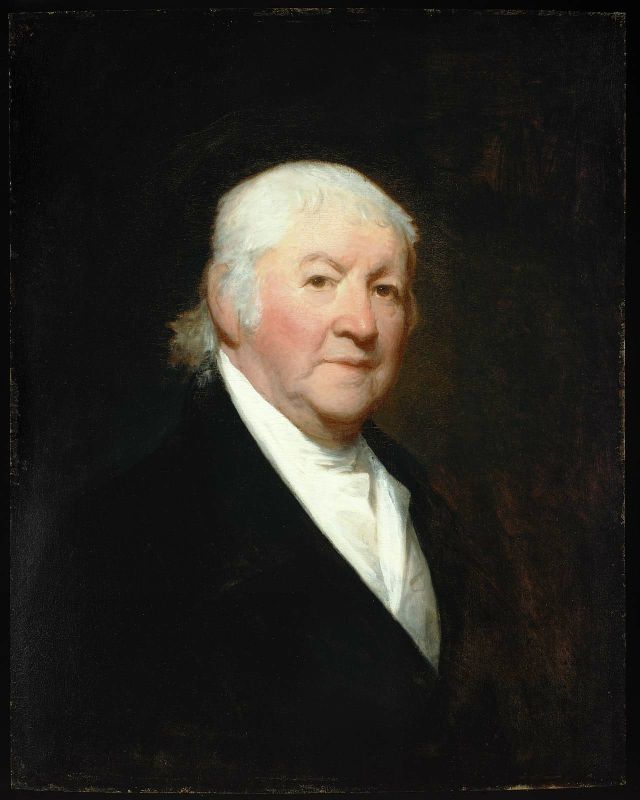
Gilbert Stuart, Public domain, via Wikimedia Commons
Paul Revere 1813 |
- According to the minutes of St. Andrew’s Lodge No,
81,
Revere diligently attended meetings, missing only 16 of 185 held from 1761 to 1771.
- In 1792, the two Grand Lodges in Boston, representing Ancient and Modern Freemasonry, finally merged, a union Revere helped facilitate.
- The pinnacle of his Masonic career came in 1794, when he was elected Grand Master of this united Massachusetts Grand Lodge.
|
During his three-year term, Revere chartered 23 lodges and energetically carried out his duties. In 1799, after the death of esteemed Freemason and President George Washington, Revere participated in the tributes and crafted a small gold urn to hold a lock of his hair. Revere’s activity decreased after 1800, possibly due to his new copper mill venture. (paulreverehouse.org)
|
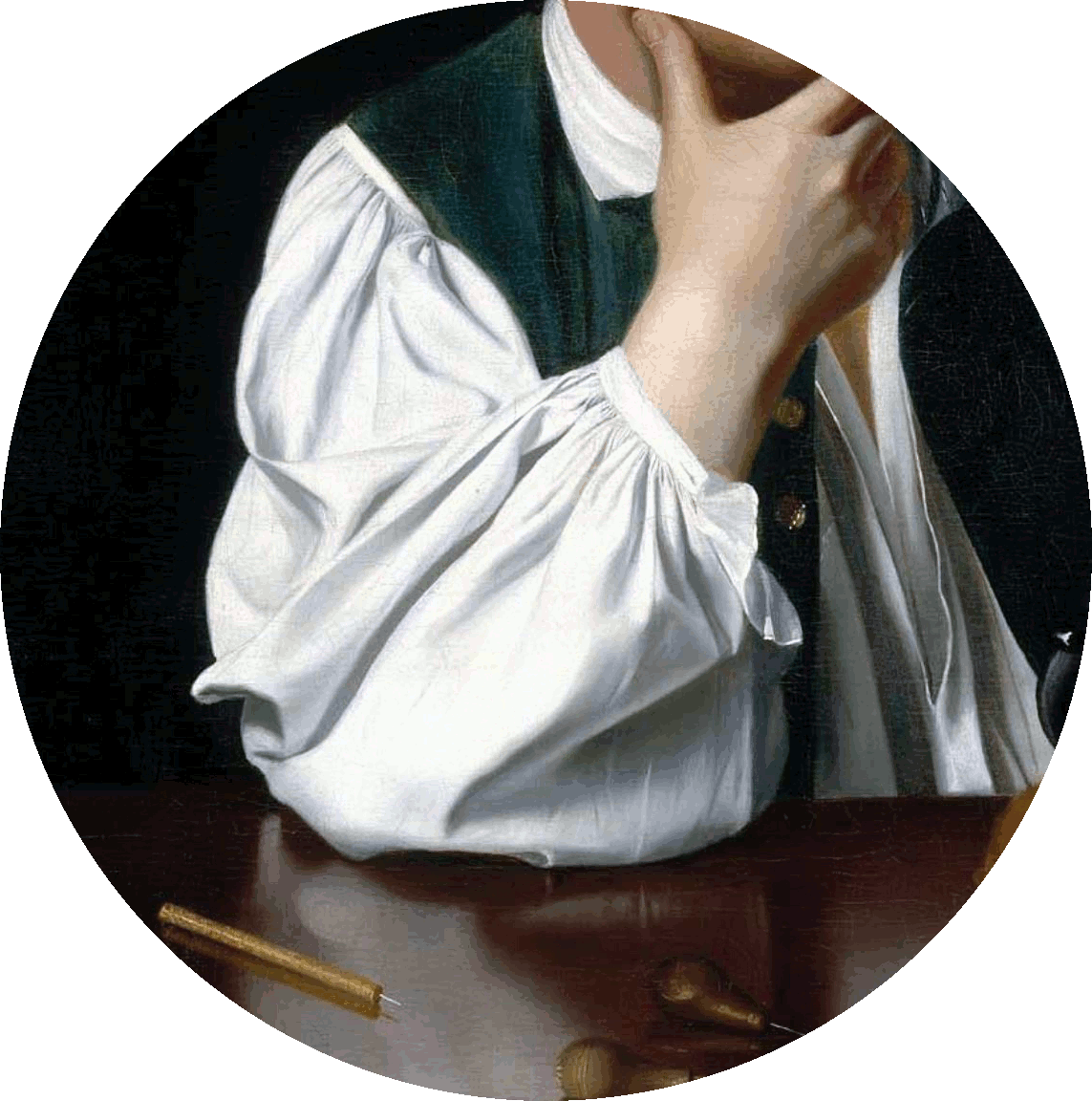
Penobscot Expedition |
- The Penobscot Expedition was a 44-ship American naval armada during the Revolutionary War assembled by the Provincial Congress of the Province of Massachusetts.
-
Paul Revere was court-martialed after the failed Penobscot Expedition in 1779, charged with insubordination and neglect of duty.
-
The primary charges leveled at Revere during the court martial were that he refused Wadsworth's order to deliver his boat and that he fled Penobscot Bay.
- He was fully exonerated in 1782 after the court found that the chaotic retreat made it impossible to follow regular orders.
- Revere insisted on the court-martial to clear his name after the disastrous expedition resulted in the loss of American ships and was seen as a major military failure.
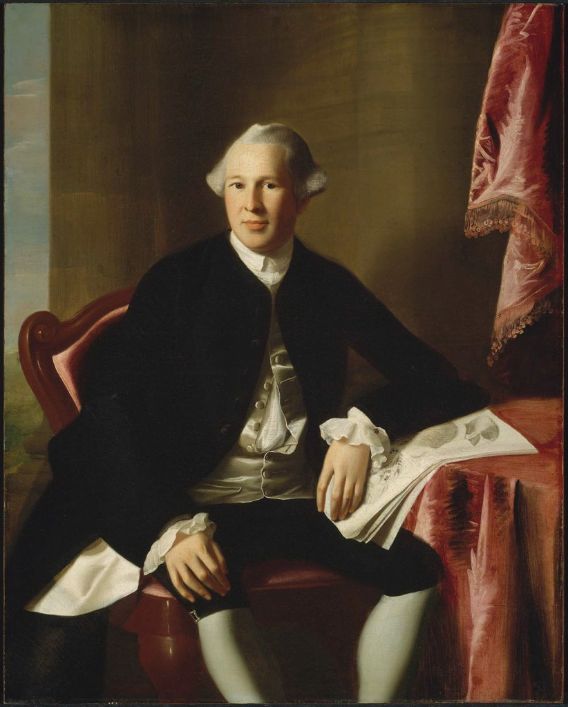
John Singleton Copley, Public domain, via Wikimedia Commons
Dr. Joseph Warren in
1765
Showing off
a Masonic hand sign |
-
Dr. Joseph Warren (1741-1775), a respected physician and patriot leader, served as the first Grand Master and Revere held numerous offices in the Grand Lodge over the years.
- The 1770s witnessed the beginning of the American Revolution. St. Andrew’s Lodge is often associated with pre-revolutionary activities, particularly the Boston Tea Party of December 16, 1773.
- Warren
was one of the key leaders of the Sons of Liberty, learned from a confidential informer, well-connected to the British high command, about plans to arrest Samuel Adams and John Hancock, who were
known to be at Lexington, and burn the colonists' military
stores at Concord.
|
The Sons of Liberty was a loosely organized,
clandestine, sometimes violent, political organization
active in the Thirteen American Colonies founded to
advance the rights of the colonists and to fight
taxation by the British government. It played a major
role in most colonies in battling the Stamp Act in
1765 and throughout the entire period of the American Revolution. Historians called the activities of the Sons of Liberty "mob terror." (Wikipedia)
|

Both sides |
-
Freemasonry as an institution remained neutral in the American Revolution, but individual members, including many high-ranking military officers and Founding Fathers, played significant roles on both sides of the conflict.
- Masonic teachings, emphasizing concepts like liberty and equality from the Age of Enlightenment, influenced many members who supported the rebellion, while other Masonic members remained Loyalists.
- Once again, playing on both sides.
|
For, borne on the night-wind of the Past,
Through all our history, to the last,
In the hour of darkness and peril and need,
The people will waken and listen to hear
The hurrying hoof-beats of that steed,
And the midnight message of Paul Revere.
(Henry Wadsworth Longfellow, The Midnight Ride of Paul Revere)
|

House of Hancock |
- Before the war, the House of Hancock was a major
supplier of war materials to the British during the French and
Indian War.
- Later, the House of Hancock mercantile was instrumental in arming the Revolutionary War by supplying the Continental Army and its naval forces, even contributing its own fleet of merchant ships.
- As one of the wealthiest merchants in America, John Hancock lent his vast resources and business acumen to the cause, helping to fund the war effort and equip ships for the Continental Navy, often called
'George Washington's Navy.'

Disappointment |
- In Congress on June 15, 1775, Massachusetts delegate John Adams nominated George Washington as commander-in-chief of the army.
-Years later, Adams wrote that Hancock had shown great disappointment at not getting the command for himself.
- Hancock admired and supported General Washington, even
though Washington politely declined Hancock's request for a
military appointment.
|
New England culture has long been underpinned by a sort of Protestant work ethic—a traditional repressed spartanism that rejects excess. That wasn’t John. John had money and he spent it, gaining a reputation and criticism for his extravagance in the process.
(Alex Johnson)
|
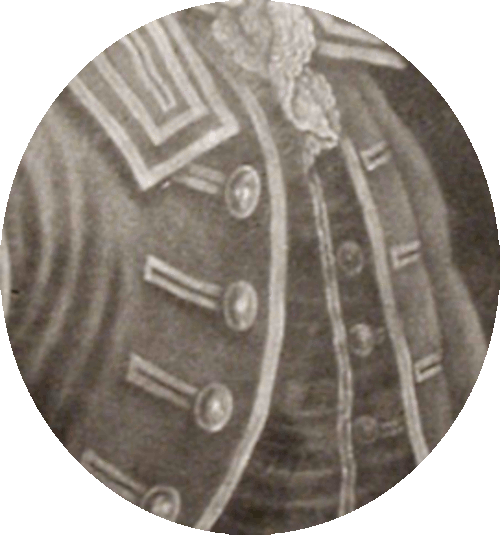
Expeditionary force |
- In August 1776, the British sent hundreds of ships and over 20,000 soldiers to America to conquer New York,
it was the largest expeditionary force ever dispatched by Britain.
- They were spectacularly successful, capturing Long Island and then Manhattan, and coming
very close to trapping Washington’s army.
- Washington retreated across New Jersey and the British commander, William Howe, discovered that conquering and controlling were two different things.
- The war effort eventually collasped in 1783 when the British
and Hessian commanders realized they had no way to control an area as vast as the
colonies from 2,000 miles away and Parliament was losing
support.
|
Hessians were German auxiliary soldiers hired by the British Crown to fight in the American Revolutionary War. They served alongside British troops in many battles, including Trenton, Princeton, and Yorktown. While the colonists viewed them as mercenaries, they were actually auxiliary forces from various German states, not just Hesse-Kassel. The term "Hessians" became a catch-all term for all German soldiers fighting for the British because most were from that region.
(Assistant)
|
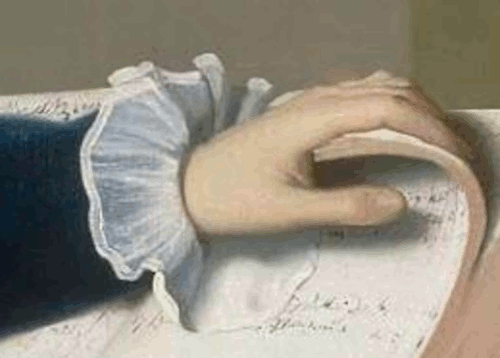
Continental Congress |
- John Hancock did not write The Declaration of Independence,
it was drafted by Thomas Jefferson, then John Adams and Ben Franklin both contributed by offering edits, emendations, and alterations.
- The document was then presented to the Continental Congress,
which Hancock headed, for debate, and further changes were made.
- Jefferson was not entirely happy with all of the
changes, but he went along with them and it was signed on July 2, 1776.
- There had been debate about who should sign it, just John Hancock alone, as he was President of the Congress
or the committee that drafted it.
- Another ideas was for
one single delegate from each of the colonies; or that everyone
involved should sign it.
|
Ben Franklin supposedly said (although this quote is also attributed to Hancock), “Gentlemen, on this matter we must all hang together; else, we shall most certainly hang separately.”
(Clay Reynolds)
|

Lawyers |
-
Many Founding Fathers and early leaders were lawyers, including John Adams, Thomas Jefferson, Alexander Hamilton, John Jay,
Roger Sherman, James Monroe, Aaron Burr, Robert R. Livingston Jr. and John Marshall.
- A significant number of the signers of The Declaration of Independence and framers of the Constitution had legal backgrounds, with roughly 45% of the Declaration's signers and 58% of the Constitution's framers
were lawyers.
- Currently, the legal profession is the most well-represented in the 119th Congress, with 179 members holding law degrees.
-The 4 branches of government: executive, legislative, judicial and lawyers.
|
There are many constitution lawyers in Congress, with lawyers making up the most represented profession in the 119th Congress. While a specific number for "constitution lawyers" isn't tracked, the high percentage of members with law degrees means many possess expertise in constitutional law. These members serve in various roles, including drafting legislation, advising committees, and shaping laws from their seats in the House and Senate.
(Assistant)
|
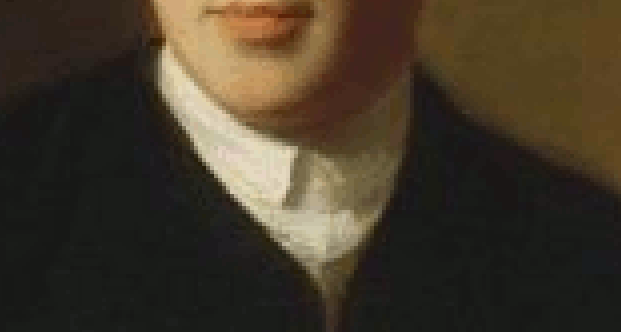
Signers |
- Of the 56 signers of The Declaration of Independence, at least
28 were lawyers.
- It is well known that the document was authored by
Thomas Jefferson, a lawyer from Monticello, Virginia.
- Perhaps less well known is the fact that the Continental Congress actually appointed a committee of
5 men for this task, Benjamin Franklin being the only non-lawyer among them.
- Kangaroo Court: How Dirty Prosecutors and Sleazy Lawyers Destroy Political Opponents, Attack Free Speech, and Subvert the Constitution.
|
It becomes clear to many first-year law students in contracts and torts classes
across the United States that English law left a distinct and indelible imprint on
the law of the United States. To be sure, precedents set by the English legal system influenced the foundation of the American system. However, the influence of
the “mother jurisdiction” goes beyond common law doctrines and statutes, reaching the legal profession itself.
(Mark Lipnickey)
|
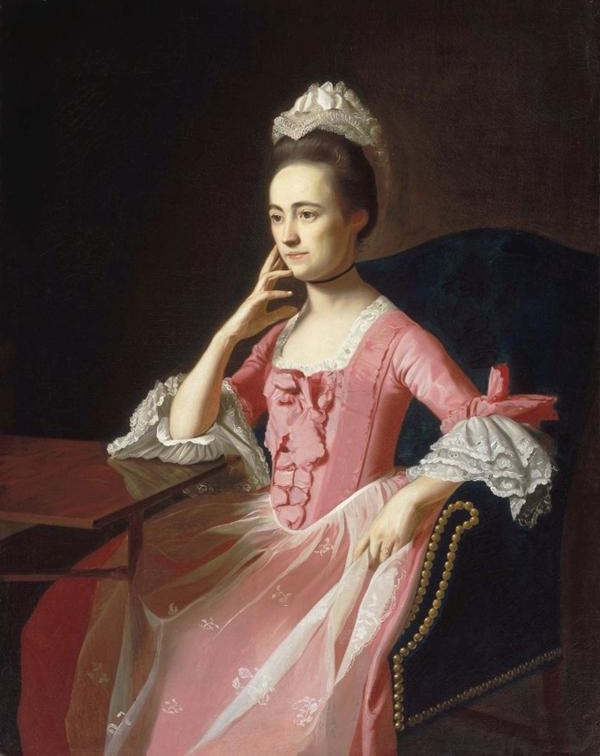
John Singleton Copley, Public domain, via Wikimedia Commons
Dorothy Quincy
Hancock c.1772 |
- When Congress recessed on August 1, 1775, Hancock took the opportunity to wed his fiancée, Dorothy
'Dolly' Quincy (1747-1830, who also came from a well-to-do merchant family.
- This was fortunate, since Hancock’s own wealth had taken
a sizable hit after he became a rabble rouser.
- The couple was married on August 28, in Fairfield, Connecticut.
- They had two children, neither of whom survived to adulthood.
|
A cash influx was important, since Hancock needed to finance the revolution if he wanted to realize his political ambitions (and not be executed for high treason). Also, love, I guess? He and Dorothy probably loved each other.
(Alex Johnson)
|
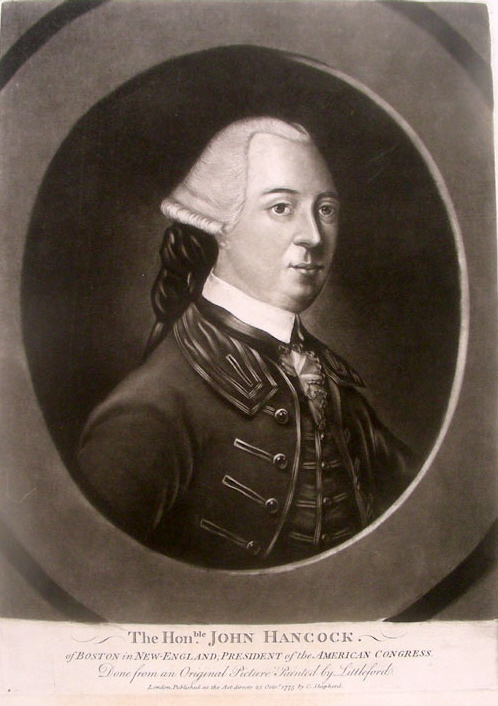
Attributed to R. Purcell, working under the pseudonym C. Corbutt. The painter "Littleford" mentioned in the caption may be fictitious., Public domain, via Wikimedia Commons
John Hancock 1775 |
- Hancock was the longest-serving president of the Continental Congress, having served as the
2nd president of the Second Continental Congress and the 7th president of the Congress of the Confederation.
- He served during some of the darkest days of the
Revolutionary War when Washington was forced to flee New
York and New Jersey in 1776, which prompted Congress to move
to Baltimore.
- Hancock returned to Philadelphia in March
1777, but Congress was forced to leave 6 months later when the
British occupied Philadelphia.
- He wrote many official
letters in order to secure money and supplies for Washington's
troops.

Vanity and
extravagance |
- John Hancock requested a leave of absence in October 1777, and
asked Washington for an Army escort back to Boston.
-
Washington sent 15 horsemen to accompany him home.
-
Hancock retired in 1777 due to problems with gout, but continued public service in his native state,
Massachusetts, by participating in the formation of its constitution.
- He rejoined the Continental Congress in Pennsylvania in June 1778, but his brief time there was unhappy.
-
Hancock got along poorly with Samuel Adams and missed his wife and newborn son.
|
By this time Hancock had become estranged from Samuel Adams, who disapproved of what he viewed as Hancock's vanity and extravagance, which Adams believed were inappropriate in a republican leader. When Congress voted to thank Hancock for his service, Adams and the other Massachusetts delegates voted against the resolution, as did a few delegates from other states.
(Wikipedia)
|
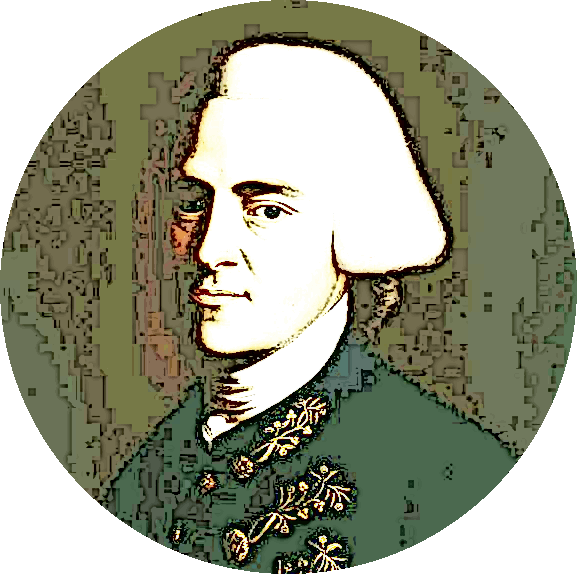
Massachusetts
militia |
- Back in 1776, he had been appointed as the senior major general of the Massachusetts militia.
- Hancock returned to Boston in July 1778, motivated by the opportunity to finally lead men in combat.
- General John Sullivan led an attack on the British
garrison in Newport, Rhode Island, and Hancock nominally commanded 6,000 militiamen in the campaign.
- However, he left the planning and the issuing of orders to
others and it turned into a fiasco.
- The French, who had
been assisting departed, as did many of his own troops,
despite all he survived with his popularity intact.
- Hancock was well-liked in Boston
because he was generous and donated to the poor and helped
widows and loaned money to friends in need.
|
Hancock was immensely popular and unquestionably patriotic given his personal sacrifices and his leadership of the Second Continental Congress.
(Wikipedia)
|
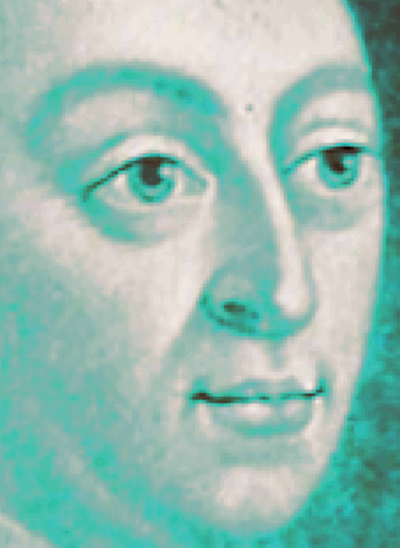
Failing health |
- Hancock governed in the Continental Congress until his surprise resignation on January 29, 1785.
- He cited his failing health as the reason, but he may
have become aware of growing unrest in the countryside and
wanted to get out of office before the trouble came.
- The turmoil that Hancock avoided ultimately blossomed as Shays' Rebellion, which Hancock's successor Bowdoin had to deal with.
|
But in view of Hancock’s large ego and well-known desire for public attention and acclaim, it seems likely that he would not have missed the opportunity to make a bold statement, and to make sure that he had an audience when he did so.
(dsdi1776.com)
|

Governor of
Massachusetts |
- Soon after, he was elected to the Governorship of
Massachusetts where he served for 5 years, and although he declined reelection,
he was again elected in 1787 and he pardoned all the rebels.
- During this time, he also signed the Articles of Confederation, and used his influence to ensure that Massachusetts ratified the
United States Constitution in 1788.
- To no one's surprise, Hancock was elected Governor of Massachusetts in a landslide, garnering over 90% of the vote.
- In the absence of formal party politics, the contest was one of personality, popularity, and patriotism.
|
We must all rise or fall together.
(John Hancock to the US Constitution Ratification
Convention, February 6, 1788)
|
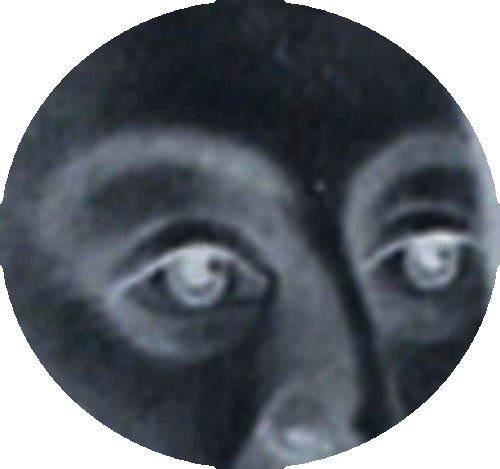
Retired |
- Hancock was put forth as a candidate in the 1789 U.S. presidential election
and he may have wished to become vice president.
- He received only
4 electoral votes in the election, however, none of them from his home state.
- The Massachusetts electors all voted for John Adams, who received the
2nd-highest number of electoral votes and thus became vice president.
- Hancock served in the
office of Massachusetts governor until his death
on October 8, 1793.
|
Elected to the Boston Assembly, 1766; Delegate to, and President of, the Provincial Congress of Massachusetts, circa 1773; Elected to Continental Congress, 1774; Elected President of the Continental Congress, 1775; Member of Massachusetts state Constitutional Convention, elected Governor of Massachusetts, through 1793.
(ushistory.org)
|

Head financer |
-
In the end, Hancock did more than any other man except Robert Morris to finance the American Revolution.
-
Hancock was so reviled by the British and venerated by the Americans that they both called him King Hancock.
- Robert Morris was a successful merchant and the considered
the 'Financier of the Revolution.'
- Morris had become a partner in a Philadelphia mercantile firm by his early 40s.
|
Guns have long been at the core of this nation’s
identity – and that many Americans always equated arms
with democracy. That fact of life was brought home on
April 18, 1775.
(Carl M. Cannon)
|
- Morris used his business connections and assets to secure and supply the Continental Army
and he commissioned privateers to raid British ships, earning millions in commissions.
- In 1776, Robert Morris was likely the wealthiest man in America, with an annual income of about £2,000 (around $300,000) in today's dollars,
from his successful merchant business.
- Obviously, he made
lot's of money off this war business.
|
Morris was a member of the Second Continental Congress and signed the Declaration of Independence, Articles of Confederation, and the Constitution, making him one of the few individuals to sign all four of the nation's great state papers.
(Assistant)
|
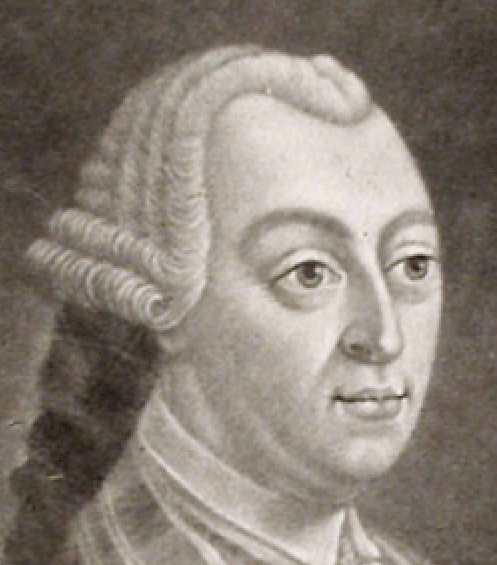
Hancock
in wig |
- Were there any men or factions with hidden agendas to
install a king in America, or who stood to make a lot of money
by separating from Britain?
- Or was the revolution purely motivated by a desire to start a democracy?
- France stood to gain access to the Americas without having to go through Britain
as they held ownership of many trade routes.
- While the Declaration was being drafted, a group led by Benjamin Franklin was charged with forging an alliance with France for economic and military alliance in the looming war.
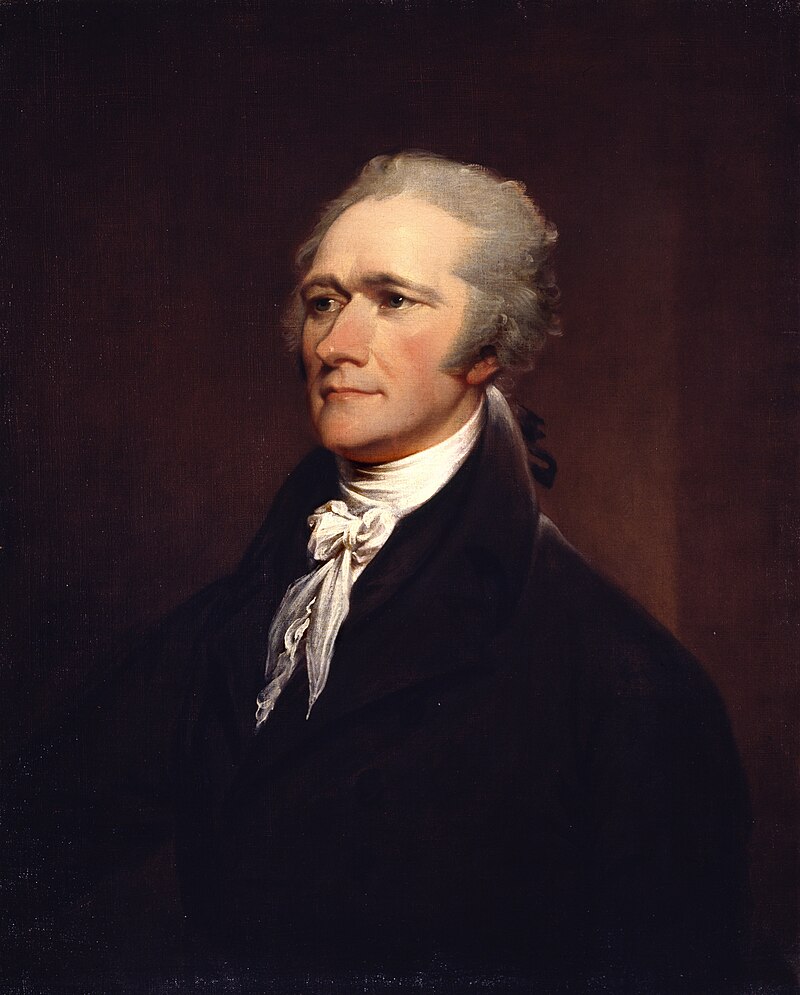
John Trumbull, Public domain, via Wikimedia Commons
Alexander Hamilton
1794 |
- Someone who did advocate for an 'elected monarchy' was Alexander Hamilton
(c.1755-1804).
- In his speech at the Constitutional Convention, he detailed the need for a
'governor' who was elected for life.
- His presentation wasn't for any kind of economic gain, but rather an intricately limited monarchy.
- Some of this structure is present in Washington now.
-
Hamilton founded the Federalist Party and already by 1793 they were
involving themselves in a foreign war in Haiti and
drafting their constitution.

Hancock |
- John Hancock was also a Federalist and they supported a
strong national (federal) government, unlike the Democratic-Republican
Party which promoted states rights.
- The Federalist party appealed to businesses who favored banks, national over state government, and maintaining an army and navy.
- In world affairs, the party preferred Great Britain and strongly opposed involvement in the French Revolutionary and Napoleonic Wars.
- The party favored centralization, federalism, modernization, industrialization, and protectionism.
- We're all witness to how well that agenda worked out
(for them).
|
The Democratic-Republicans led by Jefferson denounced most of the Federalist policies, especially the bank and implied powers, and vehemently attacked the Jay Treaty as a sell-out of American interests to Britain.
(Wikipedia)
|

British Loyalist |
- In reality, those who were wanting to secure their family business
or farm would have sided with the Crown before and during the revolution.
- The Loyalists who were older, wealthier Anglicans, wanted to maintain the good life that they were accustomed to.
- When the war was ending, it is presumed that around 80,000 left for Canada or
went back to Britain.
- The future of America was not known, the Revolution was
an expensive endeavor and many of our founders, especially those involved with the Sons of Liberty, ended up funding much of the revolutionary movement.
- It's hard to even imagine all the divided loyalties.
|
Many of the "patriots" were tea smugglers; cheap East India Company tea would cut into their cash cow. So, over the side it went (dressing up as Native Americans to avoid responsibility.)
(DerProfessor)
|
|
John Hancock
as General Thomas
Gage |
John Hancock
1737-1793
1/12 10/8 |
General Thomas Gage
1718/9-1787
3/10
4/2 |
 |
 |
|
Highbrows are easy to change |
- The portrait of Gage is by an unknown artist.
- We're
talking about shape shifters here because they can play
several roles at the same time.
- Hillary even brags about
it on Huffpost and calls her look-alikes, 'throwback photos.'
|
The interesting thing about his tenure as governor is that it was marred by protests over high government taxation and state regulations. It just goes to show you, you either die fighting the guy who taxes everybody, or you live long enough to become the guy who taxes everybody.
(Alex Johnson)
|
|
John Hancock
as General Thomas
Gage |
John Hancock
1737-1793
1/12 10/8 |
General Thomas Gage
1718/9-1787
3/10
4/2 |
 |
 |
|
Highbrows are easy to change |
- This comparison comes from the Copley portraits.
- What we have
discovered about John Hancock was that he was weaned by elite
British loyalists, was a Freemason, and only opposed the
British taxation because it impacted his wallet, not for any
colonial interest or concern (at least initially).
- The Boston Tea Party was at least in part about colonists seeking to preserve their profits from smuggling
and he was a huge part of it as the planner.
- As owner of the House of Hancock he funded the British
efforts against the French and Indian War, then he funded the
American Revolutionary War.
|
On his way to Philadelphia for the Second Continental Congress, Hancock traveled with delegates from Massachusetts and Connecticut who were greeted on the roads and enthusiastically cheered. In one instance, a crowd offered to act as horses and pull Hancock’scarriage for the final stretch into town. Hancock was thrilled and proudly wrote to his wife about
a attention that the delegation received. He also declared that he was the most noticed of all.
(allthingsliberty.com)
|
|
John Hancock
as Paul Revere |
John Hancock
1737-1793
1/12 10/8 |
Paul Revere
1734-1818
1/1 5/10
Masonic penalty hand pose |
 |
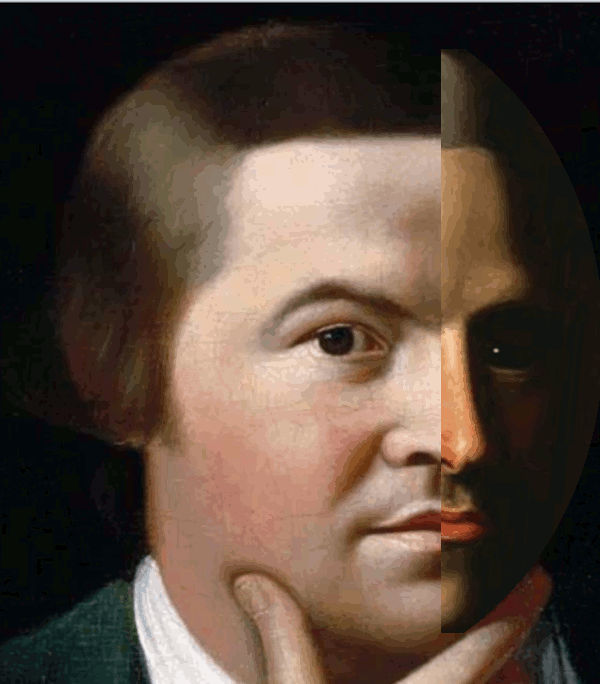 |
|
Highbrows are easy to change |
- We also know that Hancock had an
uncle who was a British loyalist who was involved with
colonial power for several years and that Hancock inherited
his seat on the Boston Board of Selectman in 1765.
- It
was his first political appointment and with very elite
connections.
-
He did come from an elite family who hung around the
political offices and were more than likely many were lawyers who
ruled under the Court law which was founded by the British Bar.
- Hancock belonged to the
Federalist Party which promoted a federal government and a
standing army and navy.
- We also have the Longfellow myth about
Paul Revere who many historians believe was glorifying his
family history for notoriety.
|
John Hancock
as Paul Revere |
John Hancock
1737-1793
1/12 10/8 |
Paul Revere
1734-1818
1/1 5/10
|
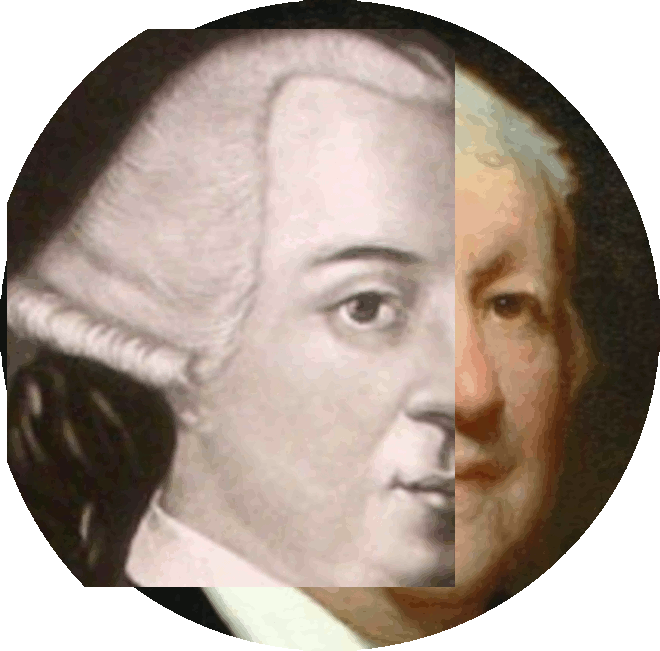 |
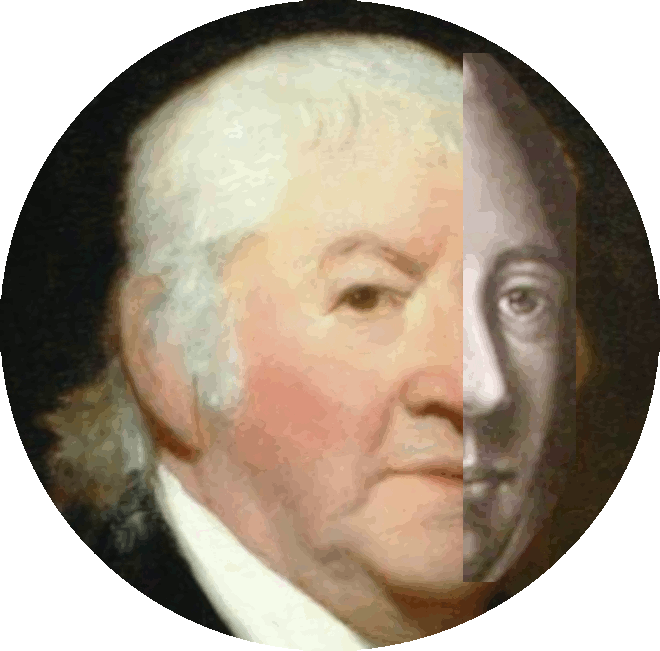 |
|
Pony tale |
-
|
John Hancock
as Paul Revere |
John Hancock
1737-1793
1/12 10/8 |
Paul Revere
1734-1818
1/1 5/10
|
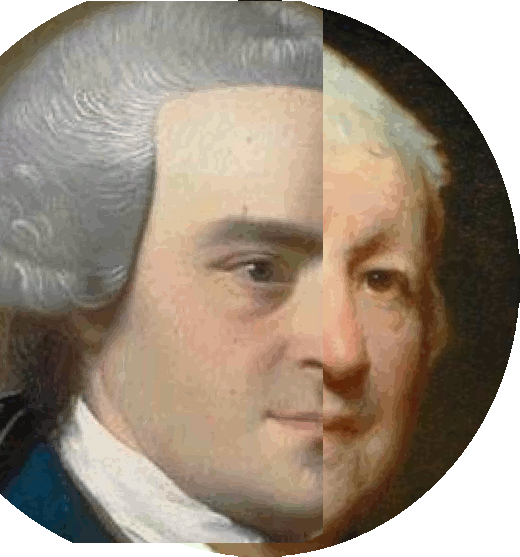 |
 |
|
Highbrows are easy to change |
-
|
John Hancock
as Paul Revere |
John Hancock
1737-1793
1/12 10/8 |
Paul Revere
1734-1818
1/1 5/10
Masonic penalty hand pose |
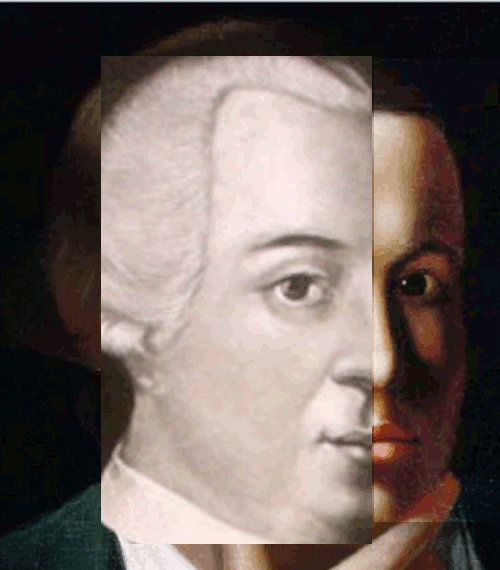 |
 |
|
Highbrows are easy to change |
|
|
-
‘The Simpsons’ packed dozens of famous Bostonians into one scene
(The Ghost of Paul Revere).
- Too much undeserved 'hero'
worship.
- Hans Sprungfeld, generally known as Jebediah Obadiah Zachariah Jedediah Springfield, is one of the two overarching antagonists of
the Simpsons.
|
The revolution was pretty much manufactured by the founding fathers. Most of them owned their own newspapers that printed half truths at best and outright lies at worse to stir up anti-british animosity. Meanwhile, while everything in the colonies was going
badly, Franklin was over in England lying and saying everything's fine and the people are just super happy to be part of the crown.
(Yoder_of_Kansas)
|
|
Jack Black
as Paul Revere |
Thomas Jacob "Jack" Black
1969
8/28
actor, comedian, musician |
Paul Revere
1734-1818
1/1 5/10
Masonic penalty hand pose |
 |
 |
|
Dead Man Walking |
- Paul Revere is easier to rhyme and has better meter than
Samuel Prescott.
-
Try telling a Philadelphia teacher that the Betsy Ross story is also made up.
|
Jack Black
as Paul Revere |
Thomas Jacob "Jack" Black
1969
8/28
actor, comedian, musician |
Paul Revere
1734-1818
1/1 5/10
Masonic penalty hand pose |
 |
 |
|
Dead Man Walking |
-
Paul Revere doppelganger Jack Black.
- Famous kin of Paul
Revere; George H. W. Bush, George Walker Bush, Jeb Bush,
Billy Bush, Raquel Welch, Thomas Dexter (c1594-1676).
|
He has left the village and mounted the steep,
And beneath him, tranquil and broad and deep,
Is the Mystic, meeting the ocean tides;
And under the alders that skirt its edge,
Now soft on the sand, now loud on the ledge,
Is heard the tramp of his steed as he rides.
(Henry Wadsworth Longfellow, The Midnight Ride of Paul Revere)
|
|
|
I glory in publicly avowing my eternal enmity to tyranny.
John Hancock

|

